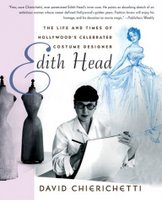 MAE WEST received top billing in the review of "Sometime" by The New York Times (published on Saturday 5 October 1918). Featured in the cast for this musical comedy in three acts at the Shubert, Mayme Dean . . . . Mae West heads the list of names, so perhaps it was composed "in order of appearance."
MAE WEST received top billing in the review of "Sometime" by The New York Times (published on Saturday 5 October 1918). Featured in the cast for this musical comedy in three acts at the Shubert, Mayme Dean . . . . Mae West heads the list of names, so perhaps it was composed "in order of appearance."
• • After that, the New York Times critic never mentions Mae again.
• • 'SOMETIME' COMES, WITH ED WYNN;
• • Musical Comedy of Commerce, with Book and Lyrics by Rida Johnson Young.
• • MUSIC BY RUDOLF FRIML
• • Francine Larrimore as Heroine and Frances Cameron as Intriguing Villainess. [Saturday — — 5 October 1918, page 11] • • According to their drama critic reporting in 1918, not much can be said for the book and lyrics of "Sometime," which came last night to the Shubert "with" Ed Wynn as comedian, and nothing shall here be said against them — — unless it be dispraise to record that they are of the musical comedy of commerce. The costumes and scenery likewise will be pasted over in a silence which, it is hoped, is discreet. ...
• • The Times critic applauds Ed Wynn NOT for the dialogue written by the playwright — — but instead for Wynn's sly ad libbing. What is a man to do in wartime, when he can't make both ends meet?, Ed Wynn's character Loney Bright asks aloud — — and then answers Make one end vegetables!
• • The critic did enjoy the title tune "Sometime," and its rendition by the heroine Francine Larrimore — — who had "a touch of distinction."
• • How difficult it is to find a photo of the commercially successful and prolific Rida Johnson Young, who penned the book and the lyrics. Hailing from Baltimore, Maryland, the beautiful former actress was born on 28 February 1869, and hit it big with "Ah, Sweet Mystery of Life," "Naughty Marietta," and other favorites.
• • In the pink-ribboned month of October, dedicated to breast cancer awareness, we mourn the early death of Rida Johnson Young, claimed by that disease at age 57, after a long struggle with it, on 8 May 1926.
• • Come up and see Mae every day online: http://MaeWest.blogspot.com/
________
Source:http://maewest.blogspot.com/atom.xml

Mae West
• • Photo: • • Mae West's venue • • Shubert Theatre • • NYC
Mae West.


















